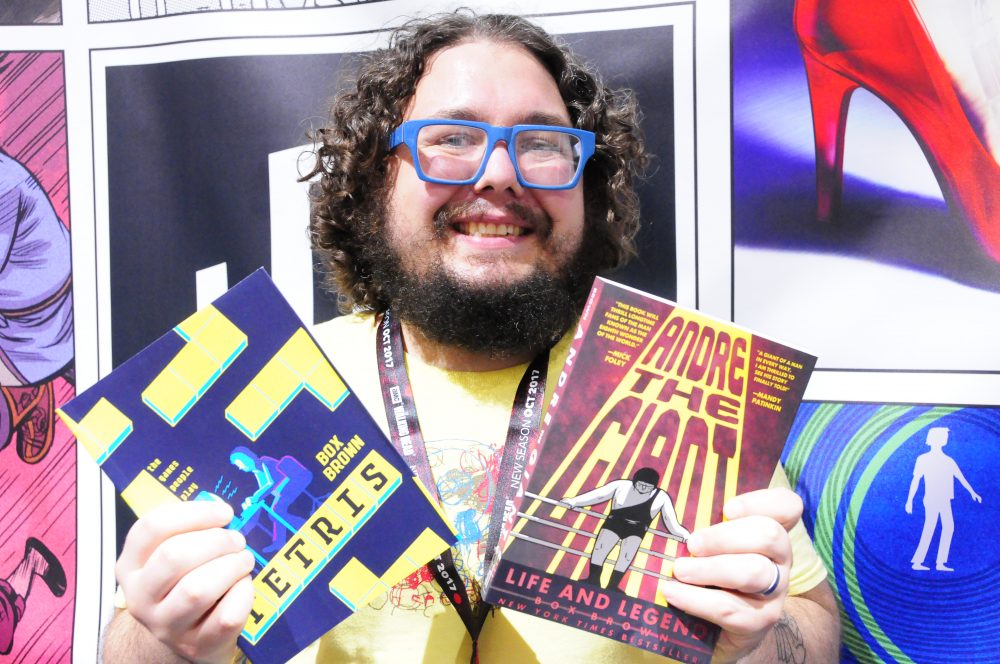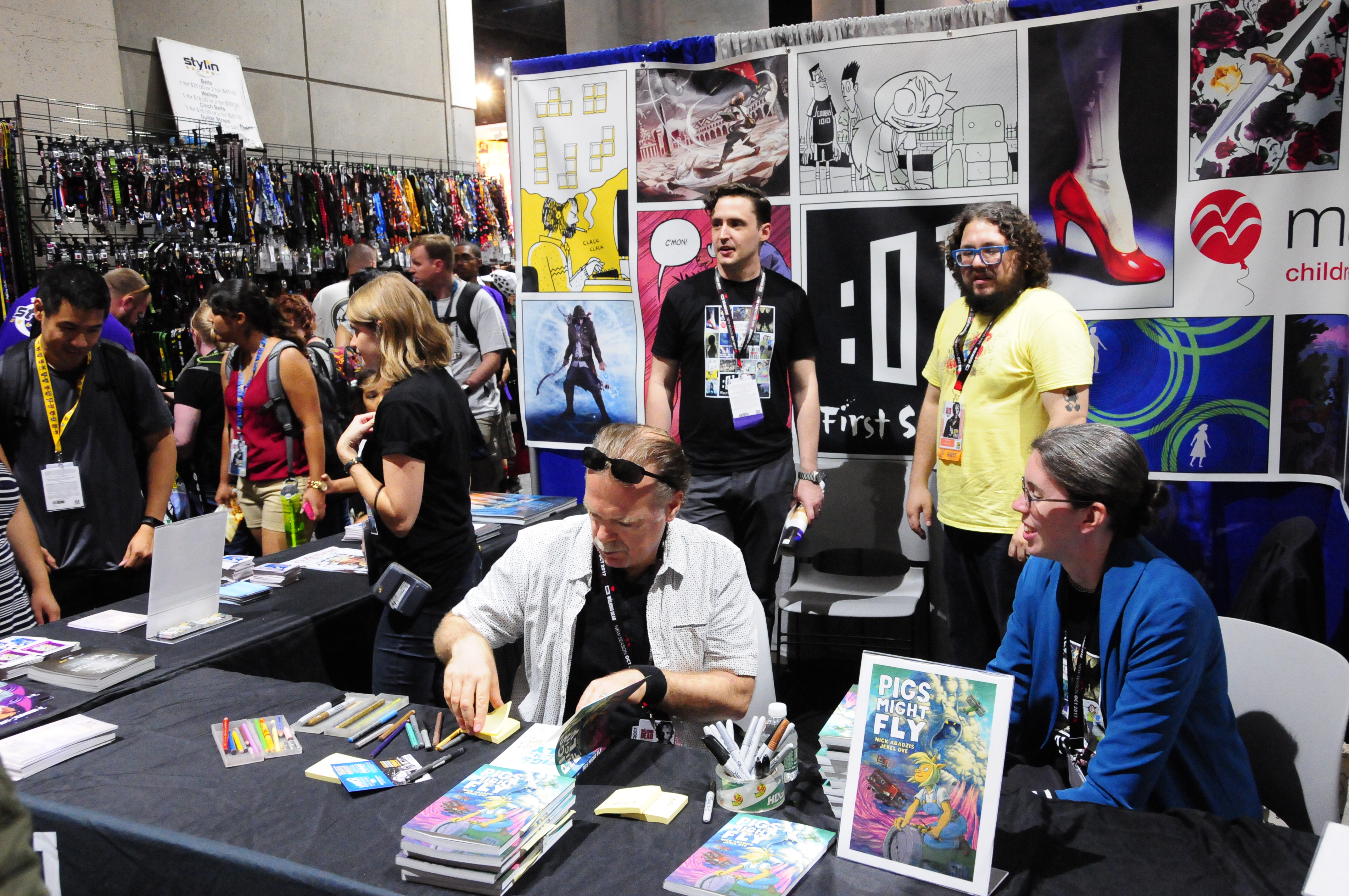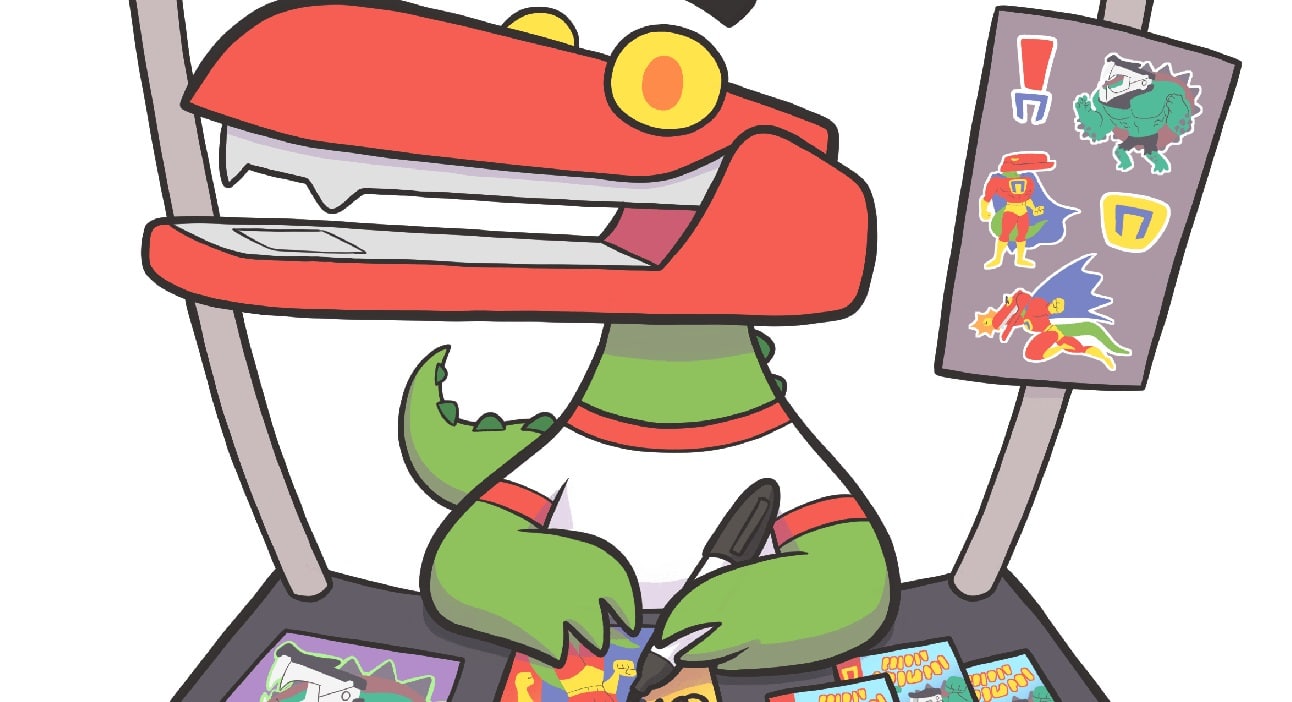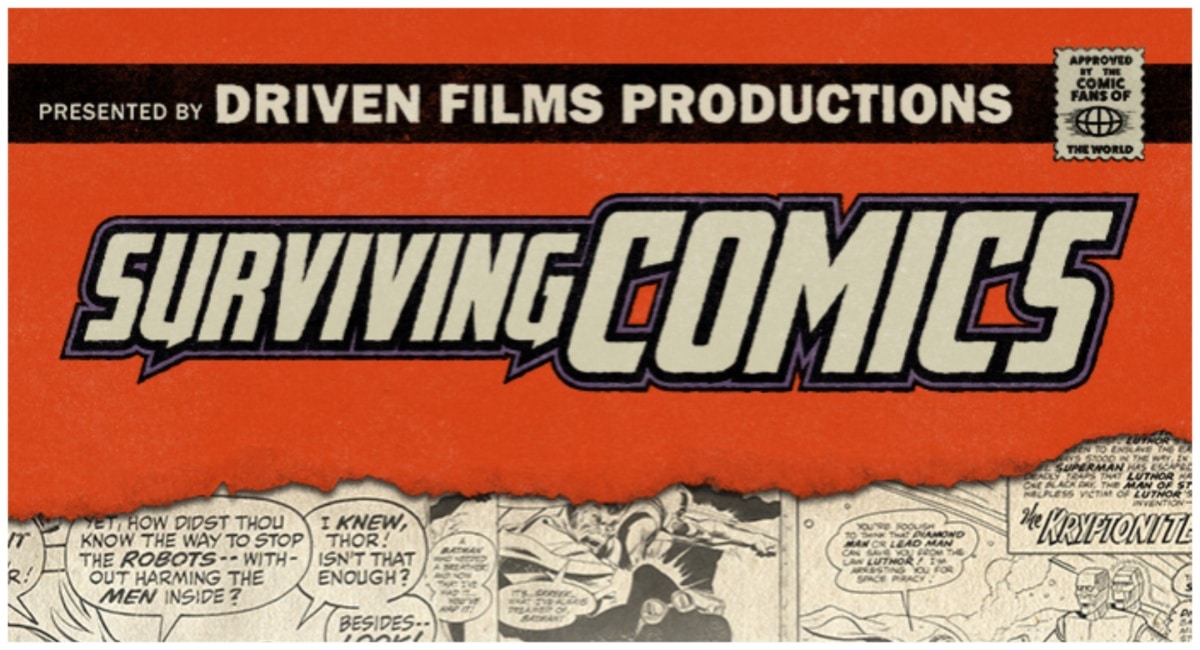
–
How much of the Tetris story did you know before beginning this project?
My only knowledge for a while was that there was a “weird Tetris story.” When I was a kid, for Nintendo’s NES there were two versions of Tetris: There was the Nintendo version and then there was the Tengen version, which was in this black cartridge. It looked like no other Nintendo game. The scuttlebutt was that it was the “illegal-version.” But nobody knew anything beyond that, only rumors from around the comic shop I use to hang out at. So, I knew there was this some kind of weird story around [Tetris] but not much else. And then going into this, I come to find out that it was the illegal version because Tengen was copying Nintedo’s [hardware] chips, and there’s this whole “chip-war” that Tengen, Nintendo, and Atari all got into together. It was a crazy legal battle, and that’s only the tail end of the story!
How long did your graphic novel take to put together from research to end?
I usually research-mad for a month and then process it. When I start to tell the story to people I meet, because I can’t-not tell it, that’s a point where I know I’ve developed the story because I’m able to tell it. There’s also a ton of research that goes on during the writing and drawing process as well. The whole thing probably took me a year, year-and-a-half. Researching, writing, and the drawing aspect just seems to me to take so long.
You started the book with a background of games in general. Why did you do this?
We tend to look at video games and see them as a modern thing, like it’s part of a culture that didn’t exist for a long time, especially since video games are a modern invention. I wanted to put them into the context that in fact games go as far back as humanity does. I really wanted to hammer out the point that games, video games in this case, but games in general aren’t just things for kids to play. That there’s something essential that makes humanity want to make and play games. I really wanted to get into the why. That we get this positive reinforcement to play games and what was the point of it. Take for example ancient Egypt. They had all these games, like “Senet”, that formed their culture. I thought this background would give video games that context that was needed.
How long have you been doing comics?
I believe this is my eleventh or twelfth-year. I didn’t start making comics until I was in my late twenties. I made these doodles in high school and college, but I felt more like an artist without a medium. I loved to draw as a kid, but I sort of quit because I felt like I wasn’t good enough. At some point, I got into reading a lot of indie-comics. I got into James Kochalka’s American Elf, webcomics were getting big then… I just immersed myself into a lot of stuff. Eventually I was like, “I can do this. I think I can do it.” And I just started drawing. I hadn’t picked up a pen in like ten-years or more, but I just started making comics. Since then, I haven’t gone more than a day or two without making a comic.
What would you say influences your work?
All kinds of stuff. I read comics all the time. I run “Retrofit Comics” which is like a small press. I do that because I feel like I want to stay involved in comics on the ground level. I love working with other artists and I love being the editor and saying, “Oh, I like this. Let’s make more of this.” All that influences my work, too. I also get influenced by documentaries, films, tv… just all these different mediums I’m taking in all the time, but they come back out for me in comics.
Tetris is essentially a documentary. Why does the comic form work for what you’ve made?
Comics just lends itself to that style of storytelling that I love. Also, with movies you have all these different people involved, all these different collaborators, all this stuff. But with comics, you can do all of that yourself. It’s all you. Total control over every aspect. You’re making your little movie, but it’s a comic.
Why did you go with black, white, and yellow for your books color choices?
It was sort of a happy accident. I originally had done the book in black and white, with the third color just grey. When I was fooling around with colors, end my editor didn’t know because I was just told to do a black and white book, I was like, “Eh, as a place holder I’ll just add this warm-yellow color that I like.” I ended up doing it for the whole comic and couldn’t imagine now doing it in any other way afterward. To me the pages seem to “glow,” like maybe how a video game screen glows.
How has been working with First Second?
It’s been wonderful. I always feel sported and I love working with my editors. I just love it.
What are you working on for the future?
I have a book coming out in February called Is This Guy For Real. it’s about Andy Kaufman and his foray into the pro-wrestling world. I have this full theory that Andy Kaufman only got into comedy so he could get into wrestling, that it was his only goal! [The book] has been really-fun to work on and now we’re just doing the final touches on it. I’m definitely looking forward to it coming out. Other than that, I’m just working with editing Retrofit Comics. We’re about to finish our first half the 2017 year and then we have another six-books coming out in the fall. Oh, and raising a baby I guess.
–
Thank you to First Second for letting us speak to Box Brown and good luck to Box at the Eisner Awards this weekend!







